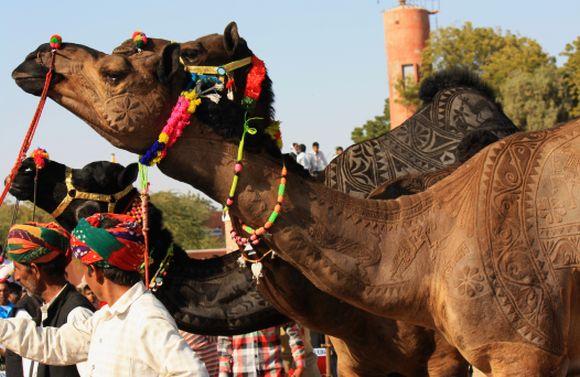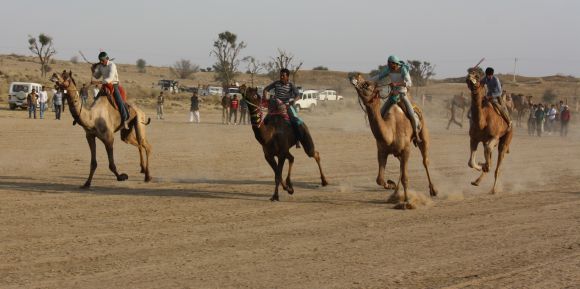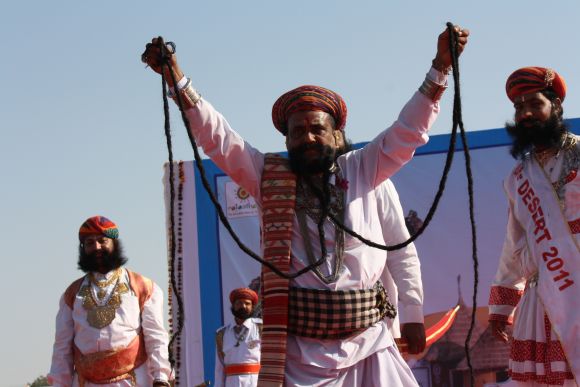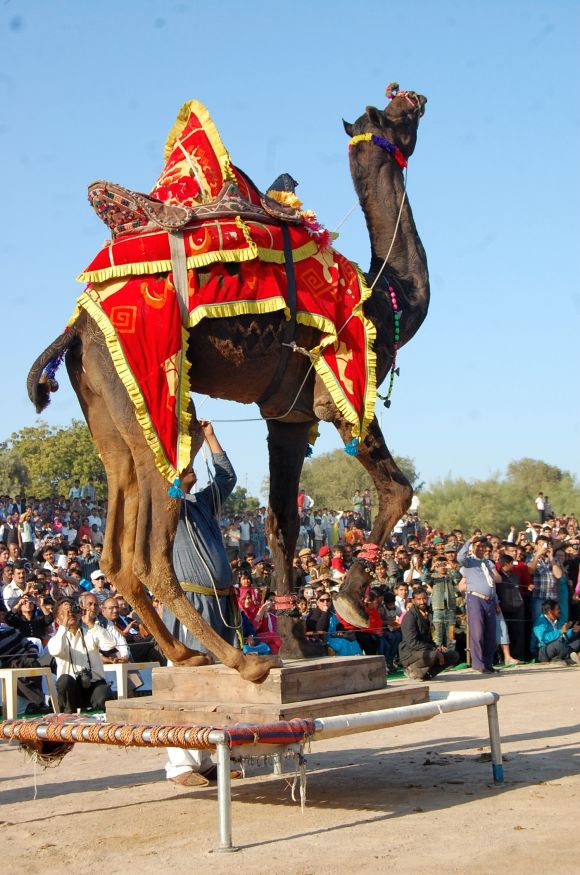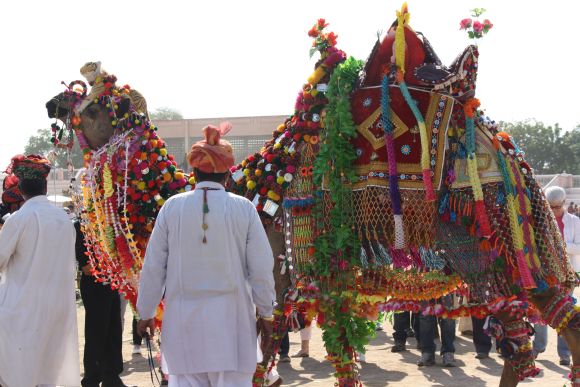The Louvre Museum – Offering a Prestigious Tribute to Islamic Art
A fortnight ago, the Louvre Museum – most visited art museum in the world – inaugurated a new wing devoted to Islamic Art. The project, which itself took more than 10 years of negotiations and work, had a budget of €100 million. It has finally emerged under a golden carpet-shaped canopy in the prestigious Visconti courtyard alongside the famous pyramid glass of the Louvre in Paris. The collection abounds some 18,000 unique pieces fulfilling the role of a strong landmark of the Islamic Arts heritage.

Aerial View of the Visconti Courtyard, Louvre Canopy © M. Bellini – R. Ricciotti / Louvre Museum Louvre Museum © 2012 / Antoine Mongodin
A huge project of great ambition fuelled by many patronages
The French government contributed €31 million to the project and €11.5 million were allocated by the Louvre Museum itself. The rest is the result of donations by the following contributors:
Around €30 million came from individuals, corporations and foundations; €17 million given by the Prince Waleed Bin Talal and €26 million in shape of contributions from monarchs including High Majesty King Mohammed VI of Morocco, His Highness Sheikh Sabah Al-Ahmad Al-Jaber Al-Sabah – Emir of Kuwait; His Majesty Sultan Qaboos Bin Said Al-Said – Sultan of Oman and Mr. Ilham Aliyev – President Republic of Azerbaijan.
Prince Waleed Bin Talal of Saudi Arabia – made this statement: “After 9/11, all Arabs and Muslims have the duty and the responsibility to tell the West about real Muslims, about real Islam, and how peaceful our religion is.” The common point of these generous donors, whether individuals, foundations, business leaders or rulers is to project their passion for contemporary art, and present their historical and/or sentimental attachment to Islamic Art.
Their commitment to this great art project, which is at the crossroads of cultures and civilisations, serves as a precious aesthetic and cultural bridge between the East and the West and undoubtedly marks a new stage in the development of conservation World Heritage.

The ground-yard of the Department of Islamic Art, Louvre Canopy © M. Bellini – R. Ricciotti / Louvre Museum Louvre Museum © 2012 / Antoine Mongodin
The new Department of Islamic Art at the Louvre, in a beautiful avant-garde architecture
It all started in 2002 when the then French President Jacques Chirac gave a speech announcing his desire to open a department of Islamic Art. This will result in many discussions, tenders, selection and validation of winners before laying the first stone in 2008 by former French President Nicolas Srakozy in the presence of Prince Waleed Bin Talal, and Total and Lafarge CEO’s, Mr. Desmarest and Laffont respectively. Works and installations of the collections continued till the recent inauguration in late September 2012.
Sophie Makariou, director of the Louvre’s Islamic Art Department, said in an interview with the BBC: “We need to state that there is a distance between what the Islamic civilisation was, its contribution to world history, and what is happening now.” She went on to call the exhibition space a chance to “give Islam back its glory”. French president François Hollande, who inaugurated the wing, called it a “significant project at a significant time”.

The ground-yard of the Department of Islamic Art, Louvre Canopy © M. Bellini – R. Ricciotti / Louvre Museum Louvre Museum © 2012 / Antoine Mongodin

The Parterre level of Islamic Art, Louvre Canopy © M. Bellini-R. Ricciotti / Louvre Museum © 2012 / Philippe Ruault

The Parterre level of Islamic Art, Louvre Canopy © multimedia device. M. Bellini-R. Ricciotti / Louvre Museum © 2012 / Philippe Ruault

The Parterre level of Islamic Art, Louvre Canopy © M. Bellini-R. Ricciotti / Louvre Museum © 2012 / Philippe Ruault

The ground-yard of the Department of Islamic Art, Louvre Canopy © M. Bellini – R. Ricciotti / Louvre Museum Louvre Museum © 2012 / Philippe Ruault
A daring and futuristic architecture reminiscent the refinement of the East by sensual curves
Two Italian architects, Mario Bellini and Rudy Ricciotti, in collaboration with the museologist Renaud Piérard took up the contemporary construction challenge that spanned ten years. The challenge was to build an avant-garde building in an old place, with just 2800 sq. meters of space.
They had the inspiration needed to burst the Islamic arts on several levels, mezzanines blows, and canopies around the Visconti courtyard that remains visible. Despite the tiny basement surface, the gallery unfolds under this glassy jewel box, resolutely turned towards the lights of heaven. A futuristic indulgence allowed by the drawing of oriental curves and folds to form a silky drape with the image of a flying carpet over the desert dunes.

The undulating glass Louvre Museum, Department of Islamic Art Architects Mario Bellini and Rudy Ricciotti © M. Bellini – R. Ricciotti / Louvre Museum Louvre Museum © 2012 / Philippe Ruault
It is like if the roundness in the identity of Islamic Art, was felt by the architects who were able to intuitively give depth to this conceptual “bee’s wing” hosting the wonders of Islamic civilisation as a rare precious nectar accessible to the only happy few.
The Museum of the Visconti courtyard at the Louvre, requested a glass in the shape of a golden cloud, consisting of 2,350 triangles mounted on some 8,000 metal tubular elements, which can create this three-dimensional glassy and metal-like aerial suspension.

A Tale of Nasir al-Din Tusi © 2012 Musée du Louvre / realization: Opixido / Illustration: Arnaud Cremet
A sensory journey in the heart of the Islamic civilisation
Visiting the areas of Islamic Art is not merely an invitation to a journey to the heart of the unique pieces but a sensory journey in the civilisation of Islam. Upon entry in the new spaces the visitor discovers two multimedia animations. The first demonstrates how Islamic art relies heavily on figurative and not only the geometry, while the second explains how the notion of religious/secular can be sometimes a complex set and that the same object can sometimes be used in different contexts.
Mid-term, we already travel by listening multimedia programmes and statements that describe the mosaics of the Mosque of Damascus Ummayads or porch Mamlouk exposed for the first time in the museum. Various listening points in Persian, Arabic and Turkish perfect the journey through senses.

Porch Mamluk period (detail) Egypt, Cairo, second half of the fifteenth century panoramic view of the wall that faces the entrance and side walls with no windows and yellow and white limestone sculptured grids modern iron forged frame chestnut, H. 250 cm, L. 300 cm l. (250 cm total dimensions of the porch) Louvre Museum, Department of Islamic Art in Cairo by G. Bought Saint-Maurice in 1887; Depot, Museum of Decorative Arts, Paris, 2006, AD RI 2003/26-1 © Musée du Louvre, dist. RMN / Hervé Lewandowski
At the end comes the “Cabinet of keys” which is designed to dismantle the clichés associated with the Islamic civilisation by a set of screens around the three central themes of the culture of Islam: The urban phenomenon and the importance of cities; diversity of languages and cultures and religious phenomenon evoking different trends larger than what we can imagine and the tales of Nasir al-Din Tusi, told at sublime and tactile stations that allow even a blind visitor to appreciate by the touch what cannot be seen visually.
Isn’t it true that strength of the art comes from the transmission of emotion which is sometimes detached from the rational for us to sample the delights of a civilisation as strong as that of Islam? Calligraphy is also exposed with geometric figures and tracery that make the approach of both teaching and exploration consistent with high respect for the original works.
A visit of the areas of Islamic Art in “Le Louvre” is not only a single invitation to a course in the heart of the prestigious collection but it is a sensitive journey within the Islamic civilisation as well.

The Parterre level of Islamic Art, Louvre Canopy © M. Bellini – R. Ricciotti / Louvre Museum Louvre Museum © 2012 / Philippe Ruault
A rare and unique collection including some masterpieces in a refined gallery
From the outset, the “Museum Central des Arts” (the name given to the Louvre after the Revolution) some Islamic objects from the royal collections form the core group of what is now the department’s collection of Islamic Art. However, from 1893 until 1903, the collection will was enriched through multiple acquisitions by a curator of ” Muslims Arts” in the aftermath of exhibitions devoted to Islamic Arts in Paris. Thus, in the Louvre since the 1905 exhibition, the “Pavilion de l’Horloge” hosts a collection dominated by Arab brass including the famous “Baptistery of Saint Louis”.

The ground-yard of the Department of Islamic Art, Louvre Canopy © M. Bellini – R. Ricciotti / Louvre Museum Louvre Museum © 2012 / Philippe Ruault
A century later, Henri Loyrette, The Louvre’s CEO, with the support of former French President Jacques Chirac started enriching the already rich museum collection of 15,000 pieces and encouraged it to be include 3,400 new pieces from the Museum of Decorative Arts including a few masterpieces constituting, thus making it one of the richest and most beautiful in the world of Islamic Art.

Bassin named “Baptistery of Saint Louis” Egypt or Syria, first half of the fourteenth century copper alloy inlaid with gold, silver and black paste. D. 50.5 cm H. 23.2 cm Musée du Louvre, Department of Islamic Art, Inv. LP 16. Former royal collections, © Musée du Louvre, dist. RMN / Hughes Dubois
The Baptistery of Saint Louis is probably the most famous interest of Islamic Art to be kept in the Louvre since 1793. This magnificent witness of metal inlaid Islamic is the symbol of the period that was overlooked by the sultans of the Mamlouk dynasty (1250-1517) attributed to the Syrian-Egyptian space. It is a prestigious and rare object in which future King Louis XIII and other kings and princes will receive baptism before himself. It is one of the rarest basins of the Mamlouks with such a strong figurative programme.
A Sovereign has taken the place of traditional radiant calligraphy by revisiting all the codes. The lilies performed in Mamlouks workshops overlap the game of the original arms.

Pyxis of al-Mughira Spain, Cordoba, 968 Carved ivory, H. 16 cm, D. 11.8 cm Musée du Louvre, Department of Islamic Art, OA 4068. Acq. 1898 © Musée du Louvre, dist. RMN / Hughes Dubois
The pyxis “Al Mughira” this exceptional box entered The Louvre in 1898. This jewel of ivory from the tenth century, a masterpiece of small sculpture fascinates us not only by its beauty and dazzling technical virtuosity, but also by the multiplicity of readings it generates. Performed in a noble and expensive material, it represents symbols of Ummayad Andalusians, such as the hawk appearing more than 17 times and other images as complex and difficult to decipher. Prince “Al Mughira”, last son of the Caliph of Cordoba Abd Al Rahman III, was defending the Ummayads against the Abbasids until his assassination that marked the death of the Caliphate (crisis “fitna” from 1009 to 1031).

The Parterre level of Islamic Art, Louvre Canopy © M. Bellini – R. Ricciotti / Louvre Museum Louvre Museum © 2012 / Philippe Ruault
The Louvre’s new wing is a worthy host for a unique collection but it is certainly more than that – a symbol of the tribute to the Islamic Art that is not well known. The numerous visitors (approximately 8.5 millions per year) of the Louvre coming from around the world can soak up these 1200 years of the illuminous golden-age of Islam on three continents as well as admire “Joconde” the pride of the Louvre and the masterpiece of Leonardo Di Vinci.
Rahma Rachdi is a Paris-based journalist of French-Morrocan descent. She specialises in economy and finance and also covers cultural (arts, cinema and fashion) political events, and other issues linked to the Middle East and North Africa region. Rahma is also the editor of fun-finance.com, a website where economy and finance matters are explained with the help of short, informative and funny comics and animations.

